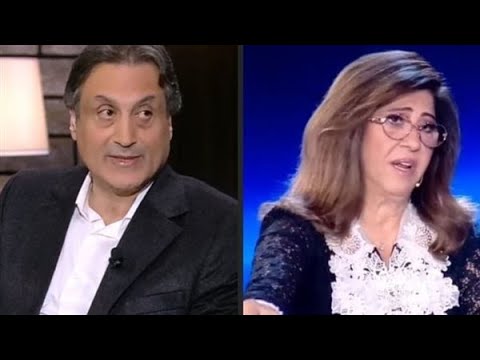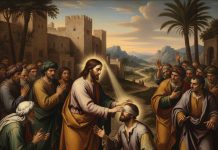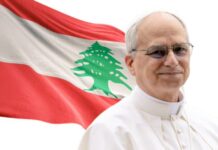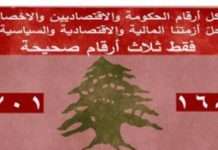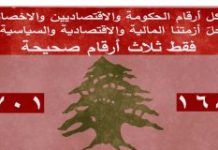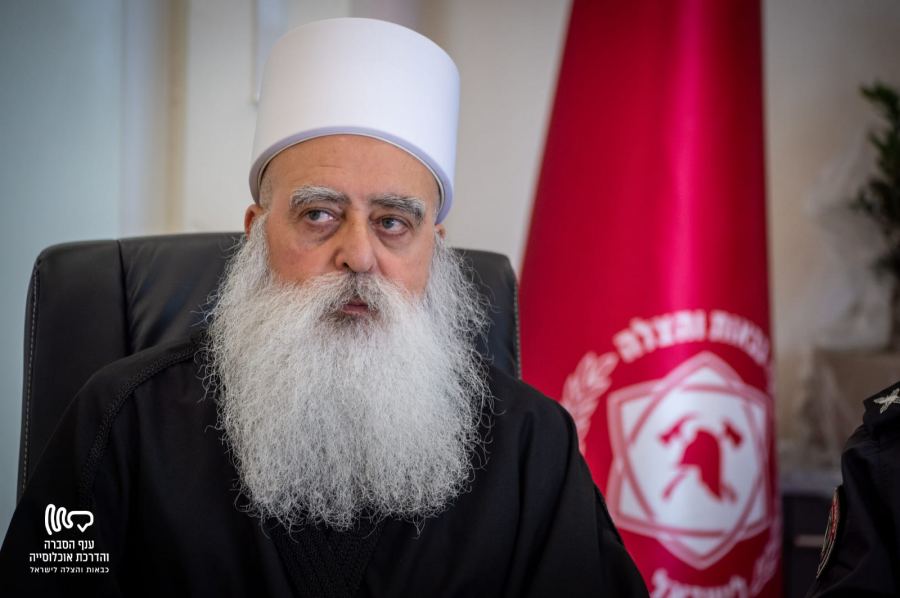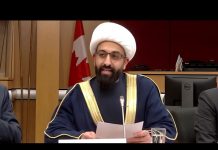Sultan Pasha Al-Atrash in exile in Saudi Arabia
Exactly a century ago, what began as a dispute about local power in the Druze majority region of Southern Syria erupted into a long-lasting anti-imperialist revolt, one that would have a lasting regional impact. In July 2025, a different Druze revolt threatened to change the trajectory of political change in Syria and is already havening regional implications. The Druze, a relatively small and compact ethnic and religious minority found mostly in Syria, Lebanon, and Israel, are once again in the spotlight.
On July 21, 1925, Druze feudal leader Sultan Al-Atrash announced a revolt against the French Mandate in the Levant. French rule in Syria, part of the secret Sykes-Picot Agreement of 1916 between Britain and France, had already been rocky from the start. French efforts at modernizing and controlling Syria had also been characterized by a considerable amount of meddling and heavy-handed micromanaging. The powerful Al-Atrash family (the Turshan, plural of Atrash) had sent representatives to iron out differences with the French only to have them jailed as hostages in order to secure good behavior from the Druze.
The French did not quite know who they were dealing with. Sultan Al-Atrash had lost a father to the Ottomans, been drafted into the Turkish Army and later had fought the French in past battles.[1] This was a warrior chief from among a warrior people. Jealous of his personal power and feudal privileges, the Great Syrian Revolt Al-Atrash ignited was not a parochial one but framed in the potent language of Syrian Arab Nationalism, anti-imperialism and freedom. His revolutionary manifesto (drafted by Damascus intellectuals) even called for the “application of the principles of the French Revolution and the Rights of Man.” The humble Arab masses, what Al-Atrash dubbed “the patchers of cloaks” were especially inspired by this cause.[2]
Despite many small victories and undoubted bravery, Al-Atrash would eventually lose the war to the French but become a legendary figure, even in the West (he was portrayed heroically in the December 1925 issue of The Atlantic, in an article written by a Revisionist Zionist).[3] While he may have lost on the battlefield, Al-Atrash’s cause won politically, giving a tremendous boost to both Syrian patriotism and Arab Nationalism, a feat that would later earn him the praise of Gamal Abdel Nasser and Hafiz Al-Assad.
And yet in 1946, 20 years after that nationalist revolt, the Al-Atrash clan fought fiercely against the newly independent Arab government in Damascus (under Presidents Shukri Al-Quwatli and Adib Shishakli) to maintain Druze rights and autonomy. The Druze, like the Alawites, and like the Christians of neighboring Lebanon, seemed to have had two quarreling factions within their ranks: those seeking unity with the greater whole – either with the state and/or the Arab nation – and those leaning towards greater autonomy, federalism, or separation.[4]
Clipping of PLO Chief Yasser Arafat with an ailing Sultan Al-Atrash
The Turshan still exist but they are not the leading political figures of the Syrian Druze today. As with other polities and individuals in Syria over the past 15 years, the Druze have had to maneuver and scheme in their relations with the state, with each other, with the Assad regime, during the brutal Syrian Civil War, and now with the new Syrian government headed by Islamist President Ahmed Al-Sharaa. There were Syrian Druze who fought against Assad and there were Syrian Druze who collaborated with and indeed held high military rank in the Assad regime army.
A (pro-Al-Hijri) Druze fighter desecrating the tomb of Wahid Al-Balous (July 2025)
Syria’s most prominent Druze figures today represent the two sides of that historic Druze duality and ambivalence. 30-year-old Laith Al-Balous represents the more Syrian Arab nationalist Druze tendency, looking towards today’s Damascus government. The Al-Balous (through Laith’s father, Wahid Al-Balous, who was assassinated by the Assad regime in 2015) raised their own militia which fought against Jihadists and against aggressive Bedouin (Sunni Arab) neighbors but which also mostly leaned against the Assad regime.[5]

Druze fighter posing with dead Syrian government troops (July 2025)
The traditional Druze religious leadership, especially in the person of Venezuela-born 60-year-old Hikmat Al-Hijri (many Druze have ties with South America, especially Venezuela), leaned much more decisively towards the Assad regime through the years. Al-Hijri broke with the Assad regime only at the very end, and much more clearly represents the autonomy-seeking tendency among the Druze.[6] And although Al-Hijri’s powerbase was initially religious, he is now very much a political player, with his own militia base and international ties (to the Israeli Druze).[7] Critics also accuse Al-Hijri of having recruited former Assad regime officers among the Syrian Druze and to be deeply involved in the Syrian drug trade across the border into Jordan.
Both Al-Balous and Al-Hijri are connected, in different ways, in the recent violence in Syria’s Druze majority Suwayda Governorate. One of the challenges the new government in Damascus faces is how to incorporate breakaway provinces back into a centrally-ruled Syria. This is a major problem with the Kurdish ruled Syrian Northeast and with Druze Suwayda.[8] Earlier this month, the Damascus government saw what seemed a golden opportunity to reincorporate Suwayda into Syria.
The 1925 war was triggered by a dead cat belonging to a French officer. The ostensible trigger for the 2025 war was the stealing of a Druze vegetable truck at a pro-government Bedouin-run checkpoint. Both local events were, of course, intimately connected to larger questions of power and authority in Syria, a century ago under French military, today, under Syria’s new Islamist rulers.

Anti “Al-Hijri Gangs” propaganda on Twitter (July 2025)
With the vegetable truck incident, tensions between Bedouin and Druze (which are nothing new) then exploded into outright conflict, with kidnappings and murders on both sides. Al-Hijri’s men – already regarded suspiciously by Damascus because of the international ties, the Assad officer connection and the smuggling question – were prominent in fighting (and killing) their Bedouin rivals. Damascus saw the sending of troops as a way to solve several problems – restore order, extend state power, curtail (or maybe eliminate) a troublesome local potentate, perhaps also build up a more amenable local figure in Laith Al-Balous.[9]

Infamous image of Druze cleric having his mustache clipped by government soldier (July 2025)
But disaster struck. The Damascus units initially sent in had two major problems. They seem to have been made up of raw recruits and they were contaminated by open religious animus. Videos of government soldiers mocking the Druze including several showing government fighters forcibly shaving the mustaches of Druze elders peppered social media. Islamists called for “no Druze mustaches (shawarib) or baggy pants (the traditional Druze sherwal).” And if insults were not bad enough, government troops and the pro-government Bedouin militias committed many human rights abuses against Druze civilians (not just against Al-Hijri’s fighters) while Al-Hijri’s forces seem to not just ambushed government troops but also slaughtered civilian prisoners and taken hostages.
All of this, the rhetoric, the videos, calls for revenge, calls to slaughter the Druze (not just “the criminal Al-Hijri”) fed into larger regional and international narratives.[10] Enemies of the Ahmed Al-Sharaa government in Damascus, including Iran and its allies, Assad regime types, and the Syrian Kurds, wasted no time in highlighting the abuses, and there was plenty of real material to work with.
Pro-Syrian government forces stand on image of Druze flag and Sultan Al-Atrash
With its own Druze population, a valued part of the state of Israel’s history and armed forces, rhetoric (and real violence) against the Syrian Druze and deeply ambivalent about Islamist rule in Damascus, the IDF intervened directly on the side of the Druze (meaning on the side of Al-Hijri).[11] Israel has long considered Southern Syria an area of deep strategic concern. Israel not only hit local government units and militias confronting Druze forces but spectacularly bombing the Syrian Defense Ministry in Damascus on live television.
With the help of American mediation, Damascus tried to forge a de-escalation agreement with the Druze which may or may not last. Government troops pulled back which led to even worse violence which then seems to be leading to government forces returning to the region.[12] There are simultaneously community-generated efforts at vendetta and at peacebuilding happening between Druze and non-Druze.

Anti-Druze, pro-government propaganda on Twitter (July 2025)
Much blood has been spilt and hearts hardened, especially among the Syrian Sunni majority against the Druze. There is deep rage and fury on both sides. While pro-government voices seek to place all the blame on the mercurial Druze warlord Al-Hijri, the fact remains that many Druze (and some Christians) were slaughtered, raped or kidnapped by pro-government forces (whether Bedouin or uniformed government units) with no regard to political affiliation.[13]

Syrian Bedouin Tribes Meet to Demand Disarming of Al-Hijri’s militia (January 2025)
Both sides are being portrayed as either victims or villains and both are portrayed too often, falsely, as uniform fronts.[14] There has been so much rhetoric and so much twisting, for political or ideological reasons, of the facts or exaggeration that it is important to make some general statements about the situation:
1) Tension and violence between Syrian Bedouin and Druze are not new. In addition, elements of both groups have connections with and are competitors in the lucrative smuggling (drugs and guns) business. They are not just in conflict because of religion or ethnicity.
2) There has been heightened anti-Druze tension for months in Syria.[15] In April 2025, there were bloodcurdling threats against Druze as a result of a suspicious video of a Druze man insulting the Prophet Muhammad which led to Syrian Sunni Muslim calls for violence against the Druze community as a whole.[16]
3) The March 2025 slaughter of Alawites by government forces on the Syrian Coast and the seeming subsequent impunity of those forces has heightened tensions with all ethnic and religious communities in the country across the board. The Druze, like the Kurds, and unlike the Christians, are armed and everyone is more leery of domination by Damascus after the March events.
4) Hikmat Al-Hijri is indeed a scheming, volatile figure who seeks to gain ultimate power within his community and is involved in all sorts of suspicious enterprises. But the indiscriminate slaughter of Druze by Bedouin/government forces seems to have boosted his popularity among Druze while Al-Balous’s influence is greatly diminished in comparison.
5) The Syrian government has real ties with Syrian Bedouin which it has used and is using as a tool to project power. In this conflict, the Bedouin are not completely free actors but rather enthusiastic sub-contractors, pursuing their own vendettas and crimes (such as rape and looting) while broadly serving the political interests of the Damascus government, in a sense serving as the “bad cop” to the Syrian government’s relative “good cop.”[17]
6) The Damascus government – whatever President Al-Sharaa’s real feelings on the matter – is itself not a free actor in this conflict either. Al-Sharaa is exquisitely aware of Qatari, and especially Turkish interests, in everything involving Syria, including the South. In a way, what happened with the Druze can be seen as a dry-run for a similar campaign to be directed against the Kurdish-led SDF in the country’s Northeast, an issue of tremendous interest to the Erdogan regime. But Al-Sharaa seems to also be hampered by his own cadres, blunt and chaotic instruments who seem to be cruder and less disciplined than he would prefer.[18]
Pro-Al-Hijri Propaganda on social media comparing him to Sultan Al-Atrash (July 2025)
A century after Sultan Al-Atrash’s heroism, the situation in Syria seems dire indeed, balancing on the edge of a knife. Any celebration marking the Great Syrian Revolt of 1925 and the great Druze warrior would ring extremely hollow today. A shaky ceasefire seems to be holding in Suwayda but what comes next?[19] The war-wrecked country’s already frayed social fabric is again, deeply and severely wounded.
*Alberto M. Fernandez is Vice President of MEMRI.
[1] Sultanalattrache.org/bio.php, accessed July 21, 2025.
[2] Al-akhbar.com/Literature_Arts/331907/%D8%B3%D9%84%D8%B7%D8%A7%D9%86-%D8%A8%D8%A7%D8%B4%
D8%A7-%D8%A7%D9%84%D8%A3%D8%B7%D8%B1%D8%B4—-%D8%A7%D9%84%D9%85%D8%B0%D9%83%D8%B1
%D8%A7%D8%AA-%D8%A7%D9%84%D8%AD%D9%82%D9%8A%D9%82%D9%8A%D8%A9, March 3, 2022.
[3] https://www.theatlantic.com/magazine/archive/1925/12/in-the-djebel-druz/648821, December 1925.
[4] En.majalla.com/node/324756/documents-memoirs/attempts-revive-syrian-druze-state-project-history, February 25, 2025.
[5] Mei.edu/publications/syrian-druze-crossroads, July 13, 2015.
[6] Syrianobserver.com/syrian-actors/from-spirituAl-guide-to-politicAl-actor-who-is-sheikh-hikmat-Al-hijri.html, July 16, 2025.
[7] Smc-syria.com/%d8%aa%d8%a3%d9%83%d9%8a%d8%af-%d8%b9%d9%84%d9%89-%d8%aa%d8%a8%d9%86%d
9%8a%d9%86%d8%a7-%d8%a7%d9%84%d9%85%d8%b7%d9%84%d9%82-%d9%84%d9%82%d8%b1%d8%a7%d8%b1%
d8%aa-%d8%a7%d9%84%d8%b1%d8%a6%d9%8a%d8%b3, March 13, 2025.
[8] Alaraby.co.uk/politics/%D8%A7%D9%84%D9%85%D8%AC%D9%84%D8%B3-%D8%A7%D9%84%D8%B9%D8%
B3%D9%83%D8%B1%D9%8A-%D9%81%D9%8A-%D8%A7%D9%84%D8%B3%D9%88%D9%8A%D8%AF%D8%A7%D8%A1-%D8%A8%D9%88%D8%A7%D8%A8%D8%A9-%D8%A7%D9%86%D9%81%D8%B5%D8%A7%D9%84-%D8%A8%D8%BA%D
8%B7%D8%A7%D8%A1-%D8%AE%D8%A7%D8%B1%D8%AC%D9%8A-%D8%A3%D9%85-%D9%85%D8%B4%D8%B1%D9%
88%D8%B9-%D9%88%D8%B7%D9%86%D9%8A, February 26, 2025.
[9] Msn.com/en-gb/news/world/exclusive-syria-believed-it-had-green-light-from-us-israel-to-deploy-troops-to-sweida/ar-AA1ISwUw
?ocid=BingNewsSerp, July 18, 2025.
[10] X.com/SHIYAROJAN/status/1910698809039921622/video/1, April 11, 2025.
[11] Alquds.co.uk/%d9%85%d9%86-%d9%87%d9%85-%d8%a7%d9%84%d8%af%d8%b1%d9%88%d8%b2-%d9%88%d9%84%d9
%85%d8%a7%d8%b0%d8%a7-%d8%aa%d9%82%d9%88%d9%84-%d8%a5%d8%b3%d8%b1%d8%a7%d8%a6%d9%8a%d9%84-%d8
%a5%d9%86%d9%87%d8%a7-%d8%aa, July 17, 2025.
[12] Newarab.com/news/sharaa-slams-israeli-plot-divide-syria-amid-suweida-truce, July 17, 2025.
[13] See MEMRI TV Clip No. 12160, WARNING — GRAPHIC: Syrian Soldiers Force Druze Civilians At Gunpoint To Jump To Their Deaths From A Balcony, July 19, 2025.
[14] Aawsat.com/%D9%81%D9%8A-%D8%A7%D9%84%D8%B9%D9%85%D9%82/%D8%AA%D8%AD%D9%82%D9%
8A%D9%82%D8%A7%D8%AA-%D9%88%D9%82%D8%B6%D8%A7%D9%8A%D8%A7/5166000-%D8%B9%D8%B4%D8%
A7%D8%A6%D8%B1-%D8%A7%D9%84%D8%A8%D8%AF%D9%88-%D9%88%D8%AF%D8%B1%D9%88%D8%B2-%D8%A7%D9%84%D8%B3%D9%88%D9%8A%D8%AF%D8%A7%D8%A1-%D9%85%D8%B8%D9%84%D9%88%D9%
85%D9%8A%D8%A7%D8%AA-%D8%A7%D9%84%D8%AA%D8%A7%D8%B1%D9%8A%D8%AE-%D9%88%D8%A7%D9%84%D8%AC%D8%BA%D8%B1%D8%A7%D9%81%D9%8A%D8%A7, July 18, 2025.
[15] Apnews.com/article/syria-druze-damascus-alsharaa-sweida-war-ace48a6e138dc1197cca77c3d25d829b, March 10, 2025.
[16] Alkhabour.com/ar/post/5233/%D9%85%D8%B4%D9%8A%D8%AE%D8%A9-%D8%B9%D9%82%D9%84-%D8%A7%D9%84
%D8%AF%D8%B1%D9%88%D8%B2-%D8%AA%D8%AF%D9%8A%D9%86-%D8%A7%D9%84%D8%A5%D8%B3%D8%A7%D8%A
1%D8%A9-%D9%84%D9%84%D9%86%D8%A8%D9%8A-%D9%88%D8%AA%D8%AF%D8%B9%D9%88-%D9%84%D8%B6%D8%A8
%D8%B7-%D8%A7%D9%84%D9%86%D9%81%D8%B3-%D9%88%D8%AA%D9%81%D9%88%D9%8A%D8%AA-%D8%A7%D9%84%D9%81%D8%AA%D9%86%D8%A9, April 29, 2025.
[17] Daraj.media/en/tribAl-invasion-structure-mobilization-and-relationship-with-the-authorities-in-the-suwayda-attack, July 19, 2025.
[18] See MEMRI TV Clip No. 12161, Syrian President Ahmed Al Sharaa on Suwayda Ceasefire: We Are Grateful to the Bedouin Tribes for Their “Heroic Actions” against Druze “Outlaw Groups,” but Maintaining Security Is the Responsibility of the Government, July 19, 2025.
[19] Cnn.com/2025/07/20/middleeast/syria-suwayda-ceasefire-us-intl, July 20, 2025.


